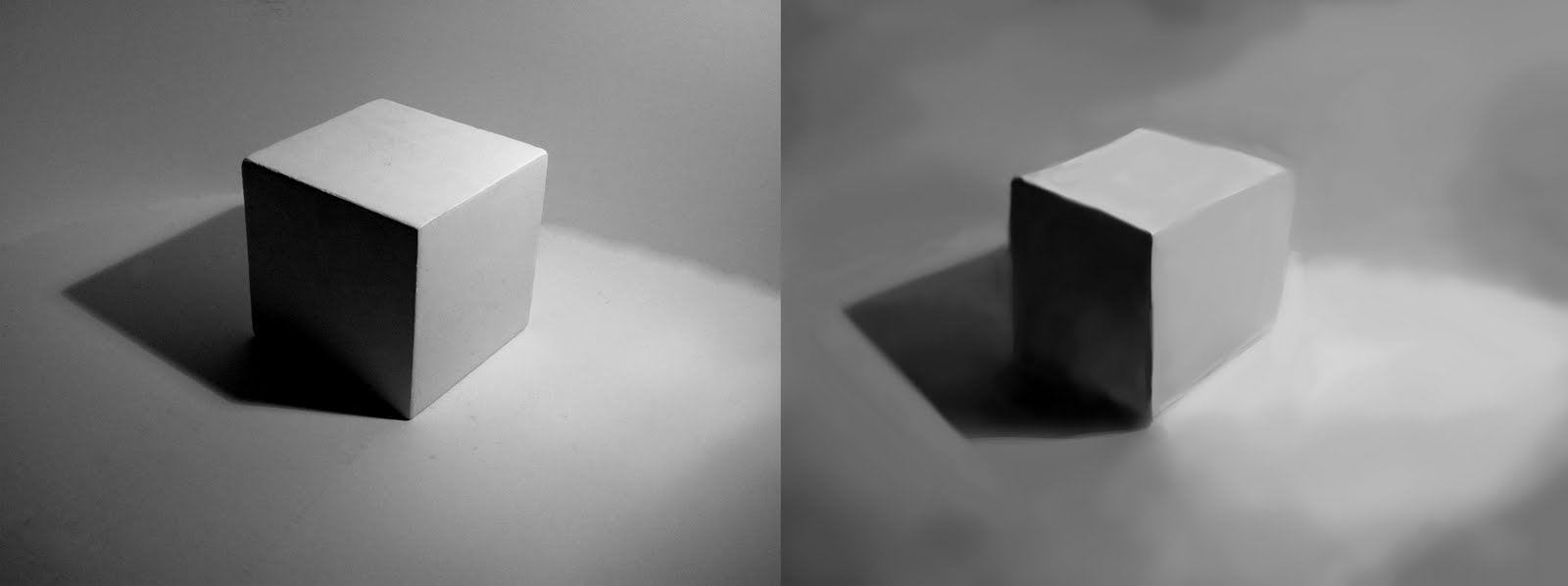So now we get into something I’ve been waiting way too long for… CFM! Duh nuh nahh! CFM, or Compositing Fundamentals, is an introductory class to the wonders of compositing in Nuke. Great right? This is what I’ve been waiting for, and I’m really passionate about.
So let’s get into this. For starters, the class set off on a Photoshop 101, which I’m quite familiar with, since I’ve played with it since freshman year of high school. Our assignments for this beginning session were to replicate images in 15 minutes, and in my case I utilized sampling, rotating the canvas, and having decent brush settings, I was able to replicate the image quite well.


Progressing on from the 101 stuff, we had to paint textures based from a scene that was given to us. I chose to do the wooden crates because I felt that like anything, traditionally a box with a texture is the easiest asset you can make. Though I’d never really use it, it’s just a fun little thing to do. Each one individually took about 20 minutes, and I felt the amount of detail was close enough, as other detail would come in through modeling. But it would also make a nice little textured asset in a camera projection, and in that case there’s no need to worry about detail if it’s just going to be in the background somewhere.


Our next assignment was to work on a skin for the Xbox 360. Basically, we were given a photo of the Xbox and a detail of where to paint appropriately so placement would work properly. The detail had to be compiled with an assortment of different images or painted in Photoshop. I went ahead and painted a human trapped inside the Box, which I did starting with base colors, and gradually building different values of midtones, shadows, and highlights. The final result was to be distorted and placed onto the image of the XBox, as for more of an appealing showcase of a sticker for the console.



I enjoyed working on the Photoshop stuff, but then we got onto working in Nuke, and getting used to how the program operated. It felt a little familiar to Shake, then I find out that it’s owned by The Foundry, so of course! We were given example files of an Audi R8, learning about merges, grades, color corrections, and outputs. This certainly got me happy with how much potential this program has.
‘Wanderer above the Sea of Fog’
Caspar David Friedrich
Our final project was to work on a tunnel parallax, using a drawing we did back in POD (Principals of Design) *I don’t go over Principles of Design and other classes, such as HAM, ENG, ENC, etc., because I feel that the name should say it, and there’s not a lot of cool 3D stuff in it, but the material learned in those classes do follow into other classes down the road. To be honest, my drawing was quite terrible. I dreaded using it for my tunnel parallax because I thought it was in no way repairable to deliver for a final project for this class.
While you can’t polish a turd, you can still add some different effects that can make it look like a more polite turd… But enough of that…
Some of the difficulties I ran into was in fact that I’m still learning how to grab the sort of color and shape as in traditional painting. It was hard to capture the same essence of the artist’s original rendering of the artwork, aside that I was trying to recreate an original made from paint with colored pencil… The hardships were in that I constantly painted over what I already had, which you can still see a bit of in the final sequence. This took quite a while, but I felt it was worth it in the end. I utilized the card system in Nuke, using the 3D cards and a two cameras, one which holds the image in place while the other pans around revealing more of the environment. Although subtle, there is a bit of movement in the clouds as the camera pans backward. Overall the final went pretty well, but I definitely have to say that I will be practicing this more in the future.

